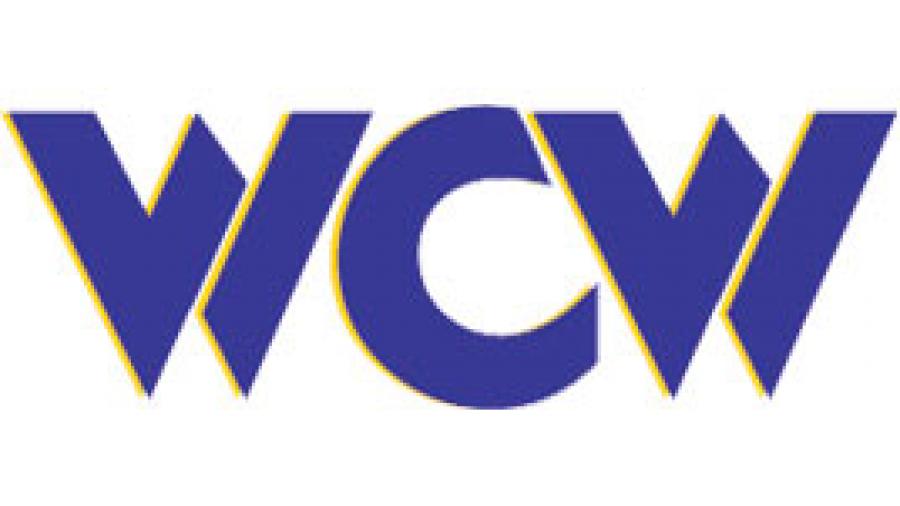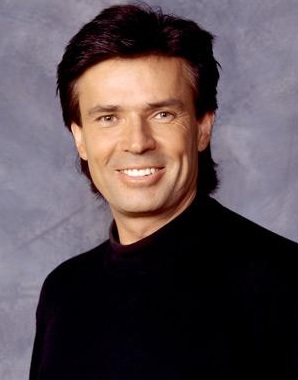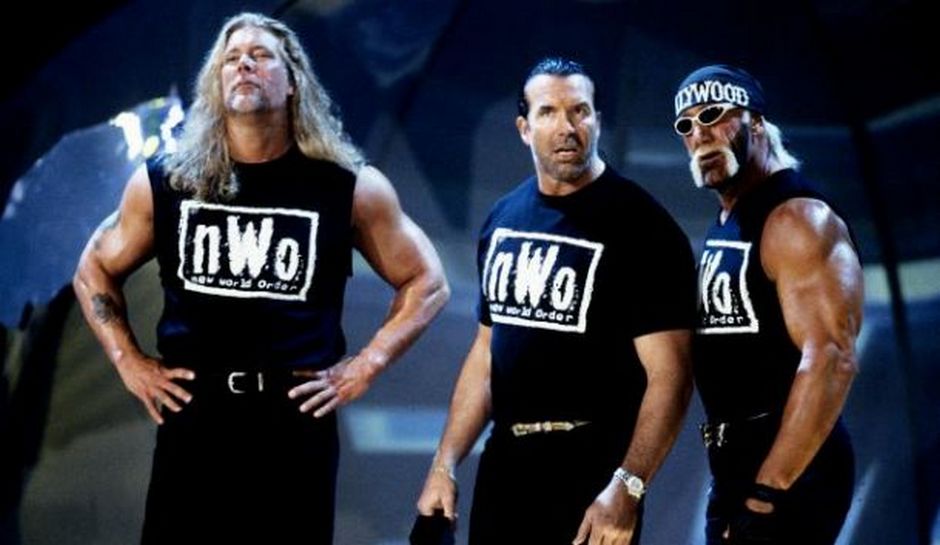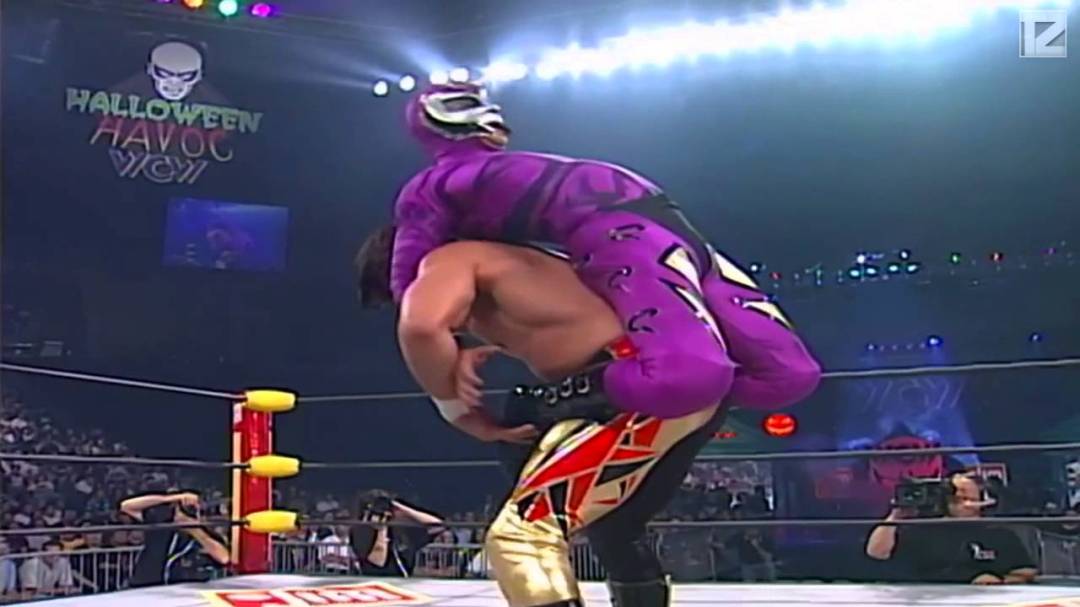Think of professional wrestling and what do you think of? You think of faces like Hulk Hogan, The Rock, Stone Cold Steve Austin and John Cena. The WWE (WWF until 2002) has a monopoly on the wrestling industry that no other company since the mid 1980’s has been able to challenge, except that is, for one. World Championship Wrestling, better known as WCW. 
On paper WCW should have been a huge success. An owner with a big budget and signing some of the biggest stars in the world with some of the hottest storylines in wrestling history. However a concoction of greed, backstage politics and downright stupidity saw it fall to it’s knees just 13 years after it’s birth.
Before I go on much further, for those of you who are not die hard wrestling fans, here are a few terms you may not know.
Face – Good Guy
Heel – Bad Guy
Kayfabe – The portrayal of storylines and characters as real.
Heel/Face Turn – Moving from a good/bad guy to the opposite.
Stable – A group of wrestlers who provide support and backup to each other in and out of the ring.
Booking – To determine or schedule a wrestling card.
Work – An event that is pre planned before being executed.
Shoot – Going off script deliberately or breaking kayfabe.
Mark – A wrestling fan who believes professional wrestling is not staged (It’s still real to me damn it!)
Right, now we’ve got that out of the way let’s begin.
The rivalry between WWE and WCW can be traced back to July 14th 1984, known as Black Saturday in the wrestling industry, when Jack and Gerald Brisco sold their entire stake in their company Georgia Championship Wrestling to WWF chairman and owner Vince McMahon. This deal meant that McMahon now owned the rights to and controlled all nationally televised wrestling in the United States. Vince’s only real competition left was Jim Crockett Promotions based in North Carolina. Crockett Promotions incorporated several of the existing promotions not owned by WWF including the newly created Championship Wrestling From Georgia and was affiliated with the long established NWA (National Wrestling Alliance) but was never able to draw in the same viewing figures that WWF were getting. In 1988 Jim Crockett Promotions was bought by media mogul Ted Turner, a huge wrestling fan himself, and World Championship Wrestling was born.
WCW were faced with the unenviable task of trying to compete or topple the industry leading WWF while some house shows struggled to attract more than a couple of hundred spectators. What they did have was an owner with a large cheque book and an ambition to beat Vince McMahon. They were able to take the NWA’s star name Ric Flair and pair him with a young rising star by the name of Sting, who would stay with the company until it’s demise in 2001. The rivalry between Flair and Sting saw WCW gain some traction in the early 1990’s until Flair’s move to WWF in 1991 after a dispute with then president Jim Herd. In Flair’s absence, WCW would struggle to maintain the slight momentum they had generated even with his return in 1993, however things would soon look up.
In 1993, a young reporter by the name of Eric Bischoff was promoted to Executive Producer of WCW and with him brought an ambitious plan to topple the McMahon stronghold on professional wrestling. Bischoff decided that the best way for WCW to compete with WWF was to make the company appealing on a national and later global scale, as WCW was still largely seen as a Southern promotion. In July 1994 he made arguably the biggest acquisition in the history of the company by signing the legendary Hulk Hogan who had left the WWF the previous year. WWF had decided to promote younger talents like Shawn Michaels to the main event scene, taking the place of older established stars like Hogan, Flair and Randy Savage.

Having now signed the two most iconic faces in professional wrestling of the last decade, WCW paired the two in a match for their world heavyweight championship at their Bash At The Beach pay per view in July 1994, with Hogan winning clean. The overwhelming success of Bash At The Beach was a clean indication of the potential of WCW, however they were still a long way from competing with the WWF. Ted Turner asked Eric Bischoff how he thought they could compete with WWE. Bischoff’s answer? Simple. To broadcast WCW on a primetime slot on Turner’s TNT channel. The first ever WCW Monday Nitro was aired in September 1995 and was scheduled to compete directly at the same time as WWF’s Monday Night Raw. The following six years would be later referred to as the Monday Night Wars. Nitro became an instant success, trading ratings victories with Raw over the course of late 1995 and early 1996, however in July 1996 the tide would change significantly in WCW’s favour.
The lure of a better salary and non cut contracts (guaranteed salaries rather than being paid for each individual match) meant several of WWF’s top stars left for WCW including Kevin Nash and Scott Hall, previously Diesel and Razor Ramon. They debuted separately in May and June 1996 as The Outsiders, with Hall insinuating they were invading WCW under orders from the WWF. A legal issue forced Hall and Nash to deny their employment with WWF but in the coming weeks they teased the addition of a third member. At Bash At The Beach 1996 it was revealed, in what is by far and away the biggest heel turn of all time, that Hulk Hogan was the third member, and the trio formed the now legendary NWO stable. The NWO helped Nitro beat Raw every week in the ratings for almost two years, during which time the WWE were forced to drastically change their programming.

The NWO became the faces of WCW and would dominate the company’s programming for the next two years. They represented the changing attitude of the fans and society as a whole with more edgy characters who made it cool for you to cheer for the villains. Executive producer Eric Bischoff became an associate member of the NWO and would often accompany Hogan, Nash and Hall to the ring and during this time he would develop the character of heel general manager a full year before Vince McMahon did during his feud with Stone Cold Steve Austin. The NWO continued to grow and recruited new members including Buff Bagwell, Konnan, Scott Norton and Vincent. Between 1996 and 1998 the World Heavyweight Championship would largely held by an NWO member, with Sting and Diamond Dallas Page becoming the faces of WCW’s struggle for supremacy over them.
So how did WCW, with the biggest names in the industry and some of the best storylines in wrestling history, become extinct just 5 years later? Well, there are a number of reasons, which I will go through now.
Over Reliance on Established Stars:
WCW’s strategy of signing the most famous faces either in WWF or those that were out of contract was initially a great strategy. It gave WCW the legitimacy it desperately needed to compete. However as the years went by their top stars became older, less mobile and as a result their in ring work wasn’t up to the standard it had previously been. In 1998 when WCW’s winning streak came to an end these were the ages of WCW and WWF’s top stars.
WCW: Hogan 45, Nash 39, Hall 40, Flair 49, Savage 46, Sting 39, Piper 44, Luger 40, The Giant 26,Goldberg 32
WWF: Austin 34, The Rock 26, Triple H 29, Mick Foley 33, The Undertaker 33, Kane 31, Michaels 33
So as you can see, with the exception of The Giant (who would join WWF in 1999 as The Big Show) and Goldberg the top stars of the WCW were a generation older than those main eventing in the WWF. WCW stuck to the principle of the established stars main eventing both Nitro, the recently created second show Thunder and pay per view events rather than bring through talent from further down the card like the hugely popular Eddie Guerrero. Eventually the WCW fans got bored of seeing the same stars feud with each other year after year and viewing figures dropped further and further behind the more exciting WWF product.
The NWO:
As much as the NWO helped WCW become the most popular wrestling company in the world in the late 1990’s, they also heavily contributed to it’s downfall. Eric Bischoff incorporated NWO centric storylines into WCW’s programming, and throughout 1997 the NWO and WCW would face off against one another for control of the company. The NWO’s numbers also grew substantially to the point where a significant portion of the roster were NWO members. In 1998 the NWO split into two factions. NWO Wolfpac led by Kevin Nash and NWO Hollywood led by Hollywood Hulk Hogan. The fans never really bought into the split and some were confused as to which faction each member belonged. Backstage politics also plagued the WCW with the infamous Finger Poke of Doom seeing the company’s ratings drop massively behind WWF’s. On 4th January 1999 World Heavyweight Champion Kevin Nash faced Hulk Hogan for the title. Hogan poked Nash in the chest, prompting Nash to theatrically fall to the floor and allow Hogan to pin him to win the title. The arena filled with boos from the fans as the NWO regrouped into one stable. On the same night, WWF had a World Championship change of their own as Mankind pinned The Rock to become World Heavyweight Champion for the first time. WCW announcer Tony Schiavone had given the details of the match away on Nitro, a tactic often used by Bischoff in previous years as Raw was taped several days before and Nitro was live. The exact words used by Schiavone were “If you’re even thinking of changing the channel to our competition fans do not, because we understand that Mick Foley, who wrestled here one time as Cactus Jack, is going to win their world title. Urgh, that’s going to put some butts in seats”. He could not have been more right. On that night over 600,000 viewers changed over from WCW to WWF and many see this incident as what put the final nail in the coffin of WCW. Injuries to Scott Hall and Lex Luger saw their numbers depleted which was made worse by a severe injury to Hulk Hogan. Several members like Konnan, Bryan Adams and Vincent also left the group and the little momentum the NWO still had was gone.
Mishandling of the Cruiserweights:
From 1996 to 1999 the most popular and by far the most entertaining part of WCW’s programming was the Cruiserweight division. Usually used to open the show, the likes of Eddie Guerrero, Rey Mysterio, Dean Malenko, Chris Jericho and Juventud Guerrera would showcase their ability against one another. Despite their tremendous talent and popularity with the fans none of them were ever given an opportunity to headline Nitro or a pay per view, largely because of backstage politics with the NWO and other top stars. Eddie Guerrero became the unofficial face of the Cruiserweights in WCW and was responsible for two of the most memorable WCW moments. Firstly his match with Rey Mysterio at Halloween Havoc 1997 which is still my all time favourite match, and secondly his scathing promo aimed at Eric Bischoff. I urge you to watch them both, they are brilliant.

Bischoff’s poor booking of the Cruiserweights saw many of them jump ship in the final years of WCW. In 1999 Chris Jericho joined WWF as an instant main eventer and Eddie Guerrero jumped with fellow WCW superstars Dean Malenko, Perry Saturn and Chris Benoit to form the Radicalz in January 2000. WWF’s superior booking and the ability to spot the marketability and talent of the Cruiserweights is one of the key reasons WWF were able to win the Monday Night Wars.
Creative Control:
As Eric Bischoff signed the likes of Hulk Hogan, Scott Hall and Kevin Nash he also created one of the biggest problems that would face the company in the coming years. Because these superstars were already established as the biggest in the world they were able to add a creative control clause into their contracts, which allowed them to have major influence in the angles they were put into and the outcome of their matches. By all accounts Hulk Hogan was the worst culprit of this along with Nash and their constant playing of the creative control card created heat backstage with some of the company’s most loyal superstars like Sting and Booker T. Bischoff eventually lost control of the company in 1999 and was replaced by WWF head of creative Vince Russo, however he too was unable to gain full creative control from the roster.
David Arquette as World Champion:
April 2000 saw WCW stoop to new lows. David Arquette was promoting his new film Ready To Rumble (which by the way is s**t) which featured many WCW superstars in cameo roles. As part of his publicity tour he appeared on an episode of Nitro and within two weeks he was WCW Champion. Yes, David Arquette the ACTOR was the champion of the second biggest wrestling company in the world. It really does beggar belief. Arquette was booked into a match with Diamond Dallas Page against Eric Bischoff, who had returned a few weeks earlier, and Jeff Jarett with the stipulation of whoever got the pin won the World Championship. He would hold the title for 12 days before losing the belt to Jarrett.
Arquette was completely against the idea of becoming WCW Champion believing wrestling fans like him would be hugely against the idea of a non wrestler becoming the champion. Head writer Vince Russo (who is a little bit mental in the same way that Lionel Messi is a little bit good at football) insisted that Arquette won the belt for the good of the company and for the publicity it would cause. Ok then Vince.
WWF’s Attitude Era:
By late 1997 WWF had lost in the ratings battle for over 50 consecutive weeks and the pressure was starting to get to Vince McMahon. The company was slowly getting rid of it’s image of the cartoon wrestlers like Doink The Clown and the occupation wrestlers like Duke Droese and Isaac Yankem (I wonder what happened to him?) and decided the way forward was a more risqué young adult orientated product. On 15th December 1997 McMahon made a taped message officially introducing a new era in the WWF and so followed the most successful 5 years in the company’s history.
The attitude era was defined by two main things. The Austin-McMahon feud which would last almost the entirety of the era and the antics of the newly formed D Generation X, led by Triple H and Shawn Michaels. DX were the breath of fresh air the WWF needed, rebelling against the authority figures within the company like McMahon and commissioner Sgt Slaughter. Both Austin and DX became the likeable anti heroes that had been so perfectly executed in WCW with the New World Order back in 1996 and it came at just the right time. As Austin and DX enjoyed a surge in popularity the NWO were breaking up into their Wolfpac and Hollywood factions and the break up of the stable had begun. WCW simply did not know how to respond after finally being beaten in the ratings in April 1998 and despite a couple of victories in the autumn of that year, the 26th October Nitro would be the final week that WCW would beat WWF.

The year 2000 saw WCW programming hit an all time low with a heavy focus on gimmick matches that completely bombed. That year’s Bash At the Beach pay per view saw company icon Hulk Hogan leave after a shoot promo (according to Hogan himself) by head of creative Vince Russo who publicly bashed Hogan and the other superstars who used their creative control over the years, instead looking to make younger stars like Booker T and Jeff Jarrett the main eventers of the future WCW. A merge between AOL and Time Warner, who had bought out Ted Turner’s empire in 1996, saw Turner forced out of his own company and the huge losses made by WCW saw Time Warner look to sell. A deal looked to be on the cards in late 2000 with an investment group led by Eric Bischoff making a bid, however the deal fell through and by March 2001 all of WCW’s properties were purchased by the WWF. Just three years after suffering 84 consecutive ratings losses to Nitro, Vince McMahon owned both companies.
WCW should have been the company to dominate wrestling for decades to come, however greed on behalf of it’s top stars, an inability to bounce back after losing the ratings battle and bizarre booking saw it crumble just as quickly as it had gained it’s momentum. It would be unfair to pin the downfall of the company on just one person, because so many of them were responsible. Hogan, Nash, Hall, Piper, Russo, Bischoff and also some of the directors at Time Warner all played their part in WCW’s fall from grace. WWF simply played the better long game and by having a better eye for talent and a better creative team, Vince McMahon and the WWF were able to win back control of the Monday Night Wars and eventually regain their status as the absolute kings of professional wrestling. Had Eric Bischoff been bold enough to release some of his main eventers and bring through a new generation of superstars not given the power of creative control WCW would probably still be in existence today. It would have been a huge risk, but in hindsight it would have more than likely worked. Quite simply, WCW is the biggest case of what might have been in sports entertainment history.